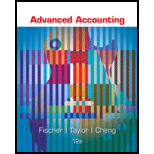
Business combination:
Business combination refers to the combining of one or more business organizations in a single entity. The business combination leads to the formation of combined financial statements. After business combination, the entities having separate control merges into one having control over all the assets and liabilities. Merging and acquisition are types of business combinations.
Consolidated financial statements:
The consolidated financial statements refer to the combined financial statements of the entities which are prepared at the year-end. The consolidated financial statements are prepared when one organization is either acquired by the other entity or two organizations merged to form the new entity. The consolidated financial statements serve the purpose of both the entities about financial information.
Reverse acquisition:
The reverse acquisition refers to the acquisition of the public company by a private company in order to avoid the complexity involved in making public issue of securities. The capitalization of acquiring company is reorganized in the case of reverse acquisition.
To Prepare:
Consolidated worksheet as of December 31, 2015.
Explanation of Solution
| Company F and Company U | ||||||
| Consolidation Worksheet | ||||||
| Year ending December 31, 2015 | ||||||
| Company F | Company U | Debit | Credit | NCI | Consolidated Balances | |
| Current assets | $10,000 | $5,000 | $15,000 | |||
| Investment in Company U | $360,000(1) | $360,000 (EL) | ||||
| Buildings | $150,000 | $100,000 | $100,000 (D1) | $350,000 | ||
| Equipment | $100,000 | $20,000 | $20,000 (D2) | $140,000 | ||
| $5,000 (D3) | $5,000 | |||||
| Long-term liabilities | ($5,000) | ($10,000) | ($15,000) | |||
| Common stock (Company U) | ($5,000) | $5,000 (TR) | $0 | |||
| Paid-in capital in excess of par (Company U) | ($115,000) | $115,000 (TR) | $0 | |||
| ($135,000) | ($135,000) | |||||
| Common stock (Company F) | ($10,000) | $6,000 (EL) | $6,000 (TR) | ($10,000) | ||
| Paid-in capital in excess of par (Company F) | ($450,000) | $354,000 (EL) | $254,000 (TR) | ($350,000) | ||
| Retained earnings (Company F) | ($15,000) | $140,000 (TR) | $125,000 (D) | $0 | ||
| Non-controlling interest | $0 | |||||
| Totals | $0 | $0 | $745,000 | $745,000 | $0 | $0 |
Table: (3)
Working note 1:
Compute the value of investment in Company U:
Being the equity of Company U eliminated to record the acquisition. The consideration has been transferred in the form of 6,000 shares of Company F having fair value of $60 each.
Working note 2:
Adjustments:
- EL: Eliminate the investment account at the time of acquisition.
- D: Distribute the excess amount which is applicable to the investment and the fair value adjustment for excess amount.
- D1: Building adjusted to fair value by increasing $100,000.
- D2: Equipment adjusted to fair value by increasing it at $20,000.
- D3: Excess of fair value allotted to goodwill of $5,000.
- TR: Retained earnings of Company F and paid-in-capital of Company U transferred to Paid-in-capital of Company F. The par value of $6,000 out of $260,000 transferred to common stock of Company F and remaining $254000 transferred to paid-in-capital in excess of par of Company F.
Working note 3:
Value Analysis schedule:
| Value analysis schedule | Company-Implied fair value | Parent price (100%) | Non-controlling interest value (0%) |
| Value of subsidiary (Consideration paid) | $240,000 (2) | $240,000 | Not applicable |
| Fair value of net assets excluding goodwill | $235,000 (1) | $235,000 | |
| Goodwill | $5,000 | $5,000 |
Table: (4)
Determination and distribution of excess schedule:
| Determination and distribution of excess schedule | ||||
| Particulars | Company Implied fair value | Parent price (100%) | Non-controlling interest value (0%) | |
| Fair value of subsidiary (a) | $240,000 | $240,000 | Not applicable | |
| Book value of interest acquired | ||||
| Common stock | $4,000 | |||
| Paid-in capital in excess of par | $96,000 | |||
| Retained earnings | $15,000 | |||
| Total equity | $115,000 | $115,000 | ||
| Interest acquired | 100% | |||
| Book value (b) | $115,000 | $115,000 | ||
| Excess of fair value over book value [c] = (a) - (b) | $125,000 | $125,000 | ||
| Adjustment of identifiable accounts | Adjustment | Life | Amortization per year | Worksheet key |
| Increase in building | $100,000 | Debit (D) 1 | ||
| Increase in equipment | $20,000 | Debit (D) 2 | ||
| Goodwill | $5,000 | Debit (D) 3 | ||
| Total | $125,000 | |||
Table: (5)
Want to see more full solutions like this?
Chapter 2 Solutions
Advanced Accounting
- Please provide the solution to this financial accounting question using proper accounting principles.arrow_forwardI need help finding the accurate solution to this financial accounting problem with valid methods.arrow_forwardCan you explain this financial accounting question using accurate calculation methods?arrow_forward
- I am looking for help with this financial accounting question using proper accounting standards.arrow_forwardPlease provide the correct answer to this financial accounting problem using accurate calculations.arrow_forwardCan you solve this financial accounting problem with appropriate steps and explanations?arrow_forward
 Financial Reporting, Financial Statement Analysis...FinanceISBN:9781285190907Author:James M. Wahlen, Stephen P. Baginski, Mark BradshawPublisher:Cengage Learning
Financial Reporting, Financial Statement Analysis...FinanceISBN:9781285190907Author:James M. Wahlen, Stephen P. Baginski, Mark BradshawPublisher:Cengage Learning Cornerstones of Financial AccountingAccountingISBN:9781337690881Author:Jay Rich, Jeff JonesPublisher:Cengage Learning
Cornerstones of Financial AccountingAccountingISBN:9781337690881Author:Jay Rich, Jeff JonesPublisher:Cengage Learning


